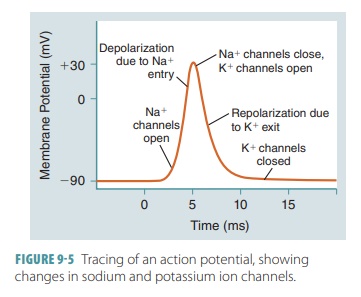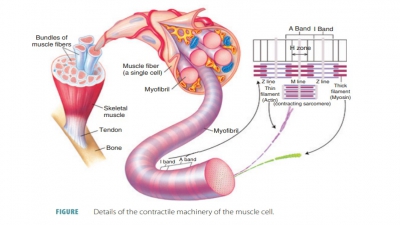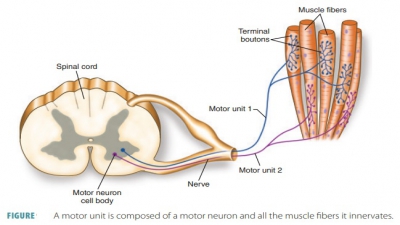Action Potential
| Home | | Anatomy and Physiology | | Anatomy and Physiology Health Education (APHE) |Chapter: Anatomy and Physiology for Health Professionals: Support and Movement: Muscle Tissue
A resting sarcolemma is polarized, meaning there is a potential difference (voltage) across the plasma membrane, whereas the inside portion is negative compared with its outer membrane face.
Action
Potential
A resting sarcolemma is polarized, meaning there is a potential
difference (voltage) across the plasma membrane, whereas the inside portion is
negative compared with its outer membrane face. Action potentials occur
because of a specific sequence of electrical changes. When they begin, they
happen all along the sarcolemma surfaces. This requires three steps:
generation of an end plate potential, depolarization, and repolarization:
■■ End plate potential generation: As ACh molecules bind
to its receptors at the neuromuscular junction, chemically (ligand) gated ion
channels open. This allows sodium and potassium ions to pass. The driving force
for sodium ions is greater than for potassium ions. Therefore, more sodium
diffuses in that potassium diffuses out. There is a transient change in
membrane potential, as the inner sarcolemma depolarizes (becomes less
negative). The local, initial depolarization is known as an end plate potential.
■■ Depolarization (action potential generation and propagation):
The end plate potential begins an action potential by moving to adjacent
membrane areas. It opens voltage-gated sodium channels, so that sodium ions
can enter along its electrochemical gradient. When the membrane voltage known
as the threshold is reached, an action potential is initiated (generated). The
action potential propagates along the length of the sarcolemma in every
direction from the neuromuscular junction. The local depolarization wave of the
action potential spreads to nearby areas of the sarcolemma. Voltage-gated
sodium channels are opened. Sodium ions then diffuse into the cell along its
electrochemical gradient.
■■ Repolarization (the sarcolemma is restored to its
polarized state): Like the depolarization wave, the repolarization wave result
from membrane permeability changes. Sodium channels close while voltage- gated
potassium channels open. The potassium ion concentration is much higher inside
cells than in extracellular fluid. Therefore, potassium
diffuses quickly out of muscle fibers to restore negatively charged conditions
inside (FIGURE 9-5). During repolarization, a muscle fiber begins a refractory period, because
the cell cannot be stimulated again until repolarization is complete.

Related Topics


